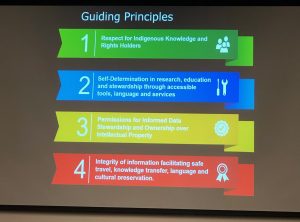The Firelight Group is an Indigenous Mapping organization. From the website: We are a consulting group that works with Indigenous and local communities in Canada and beyond to provide high quality research, policy, planning, negotiation, and advisory services. Our work focuses on culture, health, socio-economics, ecology, and governance to support the rights and interests of Indigenous communities.
Their approach is to only work with Indigenous and local communities, or on projects where communities support their participation. This speaks to the level of respect and awareness of issues regarding existing structures of governance in First Nations communities.
In terms of their Ecology work, they support community managers to develop inventories, monitoring programs and management plans that combine scientific technical studies and Indigenous knowledge for important animals, plants, and ecosystems. Firelight Group focuses on the plant and animal species that are important to communities and their culture. As Nancy Turner, ethnobotanist stated in her interview with Dr. Michael Marker, there is a huge connection between stories and plants. Stories are more than just words – they are embodied lessons – every culture has their stories that embody the main lessons of their culture. She relayed the story of The Pauls and the Great Flood. They tied their canoes to the Arbudest trees – these particular trees are gnarled and their roots were deep, so they held on until the flood receded. The Salish people revere these trees, as they did a service to them – the trees saved their people. These types of stories are important to the identity of the people living on these lands. Firelight Group is cognizant of this, as they perform research with Indigenous communities, and not of them.

